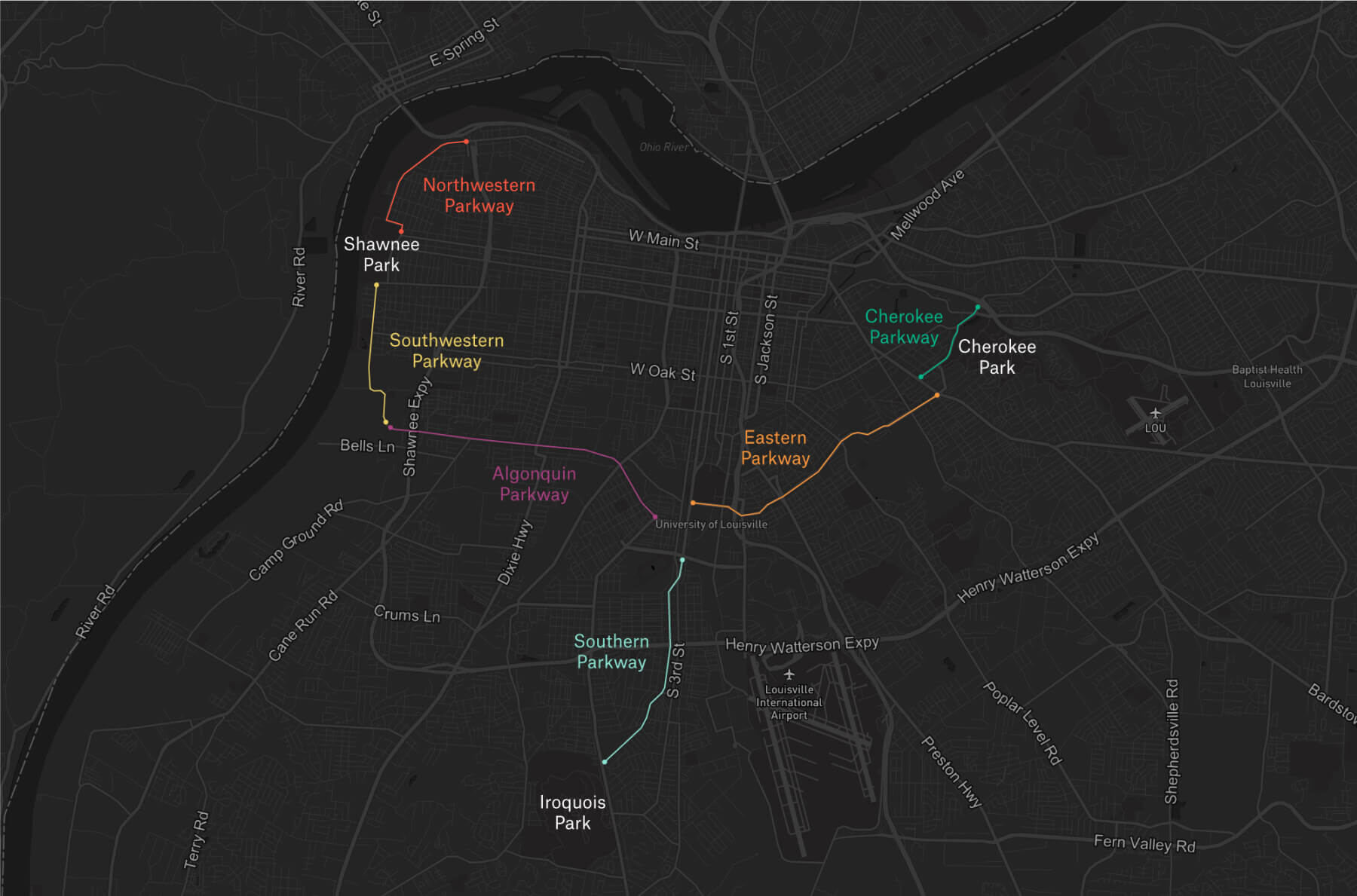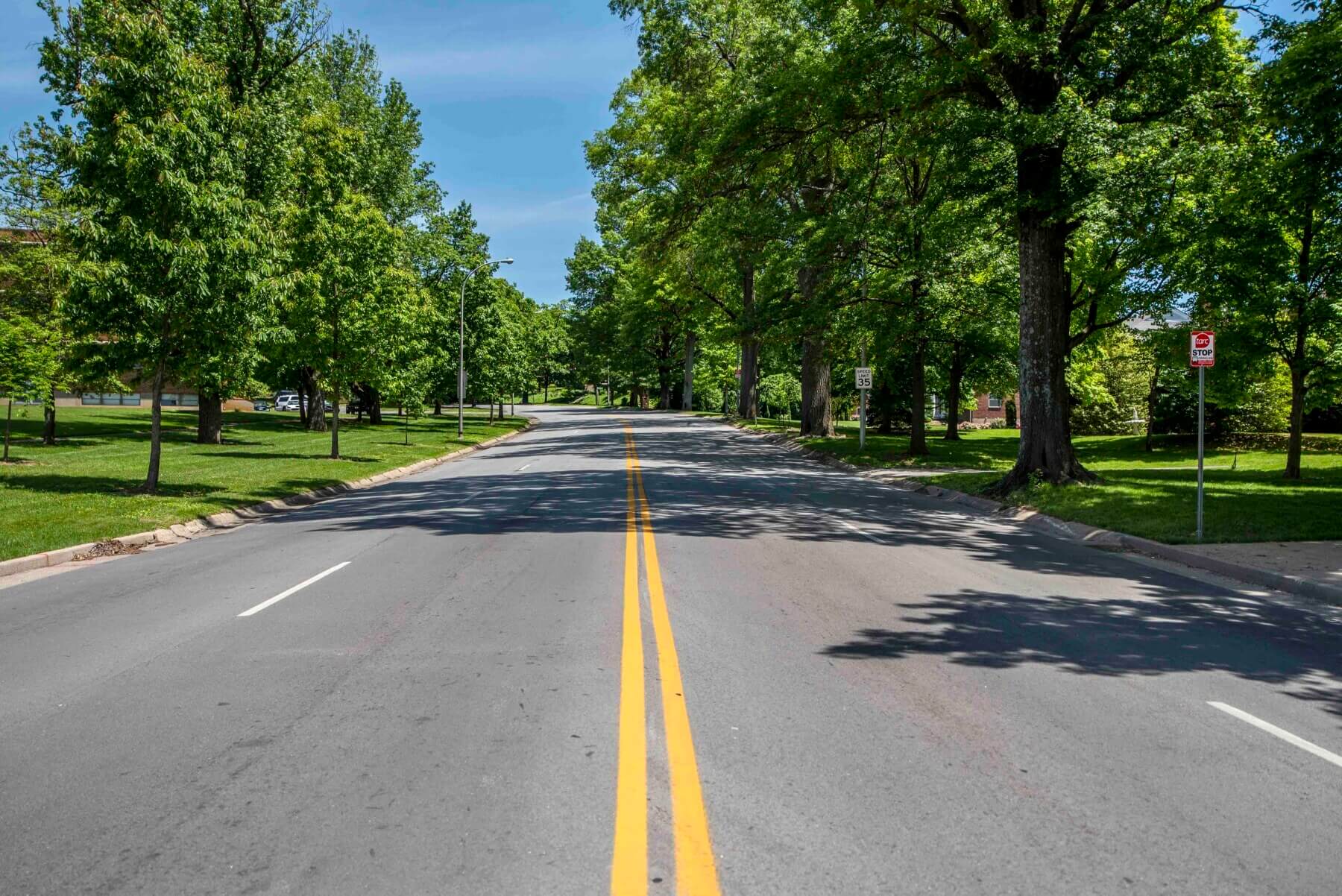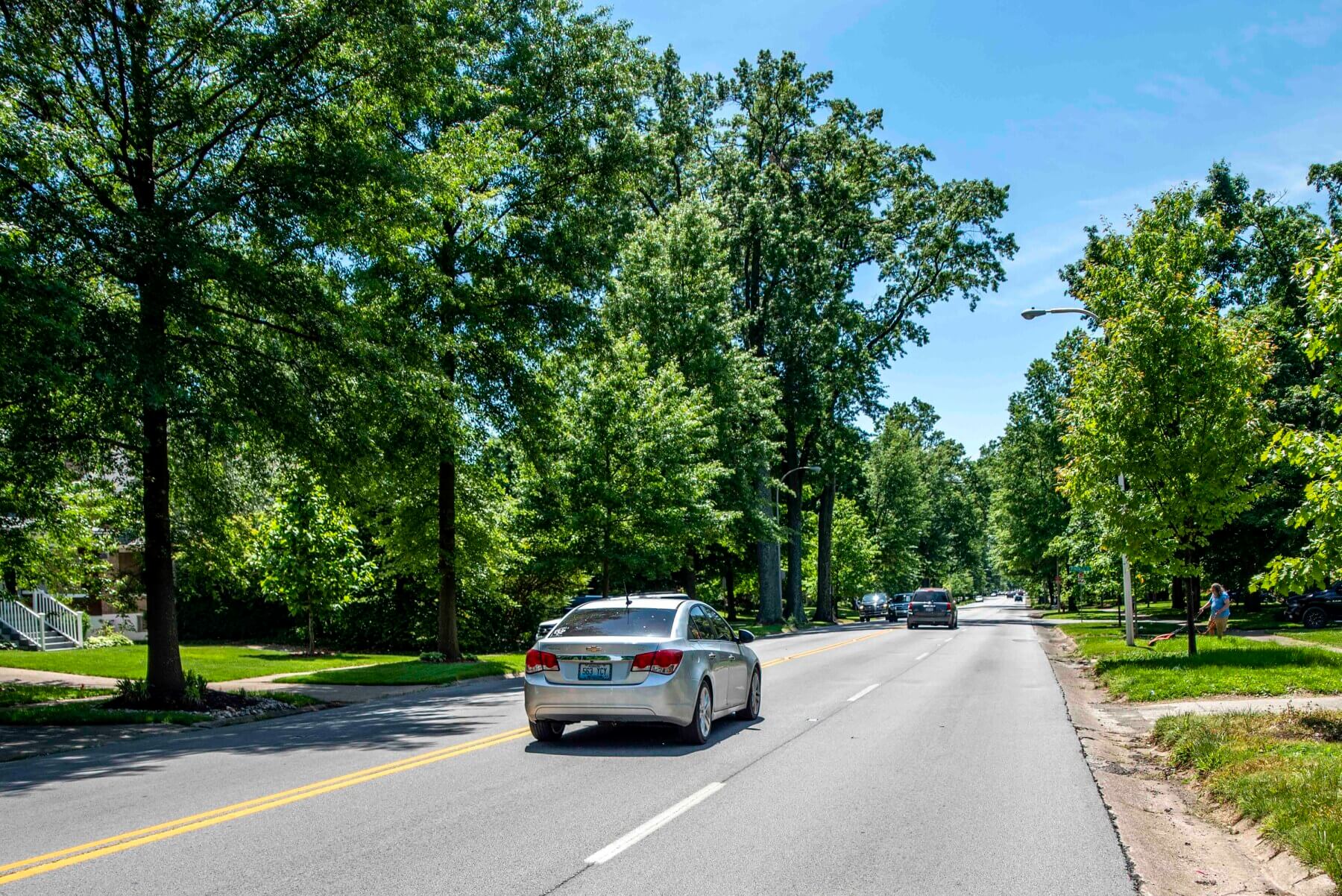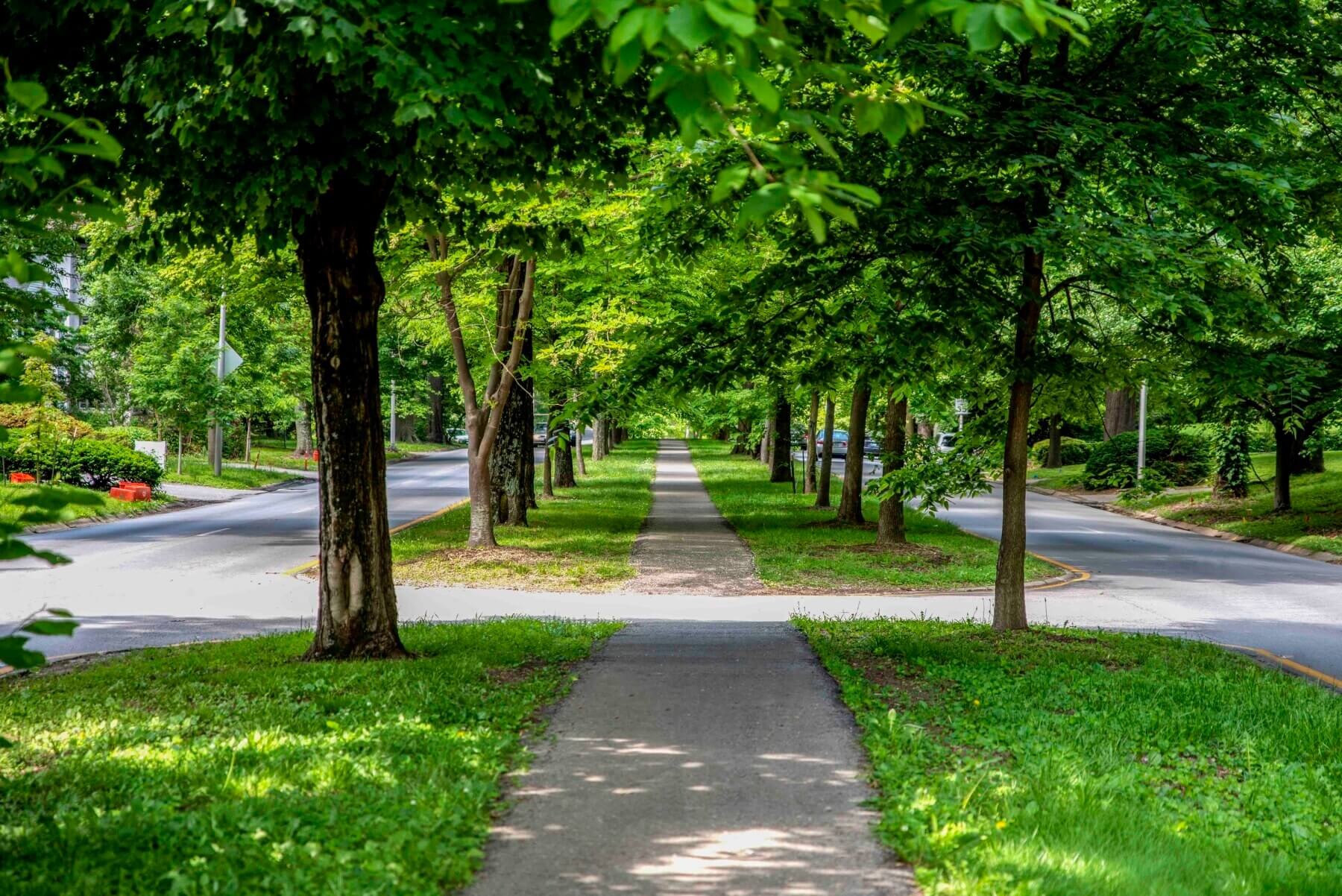
Getting Back to Our Roots
While the physical characteristics of each individual parkway varied, they all had one thing in common: the way they were used had changed over time, which meant their design needed to change too. The roadways’ original lanes, which were designed for horse-drawn carriages, were wider than modern streets and leading to speeding. We recommended narrowing some segments along the parkways to reduce speeds, keeping the road’s initial width and using the extra space for sidewalks, bike lanes, shared-use paths, bus stops and on-street parking. The slim down not only allowed us to create safer conditions for all roadway users, but also honors Olmsted’s original intent to provide separation for each mode of transportation. Bicyclists and pedestrians can slow down and soak up the experience without worrying about vehicle traffic.

Sharing is Caring
The Olmsted parkways were an equalizer for the Louisville community; every person suddenly had access to green space no matter who they were or where they lived. Honoring Olmsted’s vision for shared public space, we proposed adding shared-use facilities that accommodate pedestrians, bicycles, scooters, transit and cars. In addition to the parkway master plan, Gresham Smith also developed a shared-use path master plan and provided recommendations for a nearly 8-mile long path system. The off-road facilities are designed to accommodate pedestrians and bicyclists along the entire length of the Algonquin and Southern Parkways and part of the Southwestern Parkway. We also recommended pedestrian-friendly amenities such as benches, drinking foundations and trash cans.

Keeping the Character
There’s a general consensus among Louisvillians in regards to what makes the parkways great: the tree canopy. While designing improvements for the existing roadways, we were careful to honor Olmsted’s original vision by refining the parkways’ distinct physical characteristics that are integral to Louisville’s cultural fabric. The location, spacing, frequency and variety of trees plays an important role in shaping the character of each parkway while promoting sustainability and resiliency, and continuous multi-use paths, a variety of curb shapes and materials and specific lighting styles all help create a certain look and feel as well.

Laying the Foundation
Beyond traffic improvements, the master plan is set to lay the foundation for a healthier, cleaner Louisville. The improvements for light vehicles, such as bicycles, scooters and e-bikes, and pedestrians will indirectly reduce automobile emissions while also encouraging residents to life a more active lifestyle. The Olmsted parkways improvements are about more than preserving a historic landmark—they’re about adapting the original vision to contemporary social concerns and creating resiliency to emerging transportation trends that will continue to evolve.
